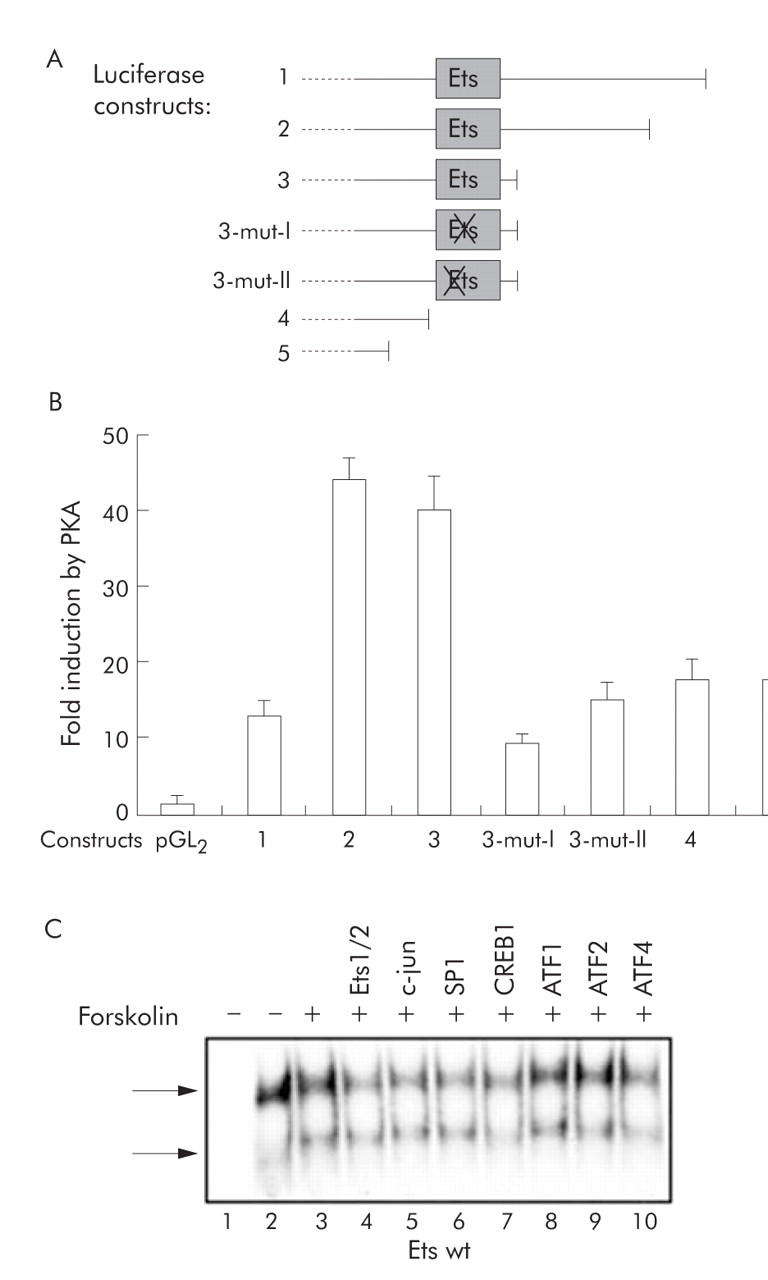Figure 7.

A putative Ets binding motif mediates inducible activation by protein kinase A (PKA). (A) In order to further characterise the cAMP response element binding protein (CREB)/PKA/forskolin sensitive region, the sequence of the Ets binding motif of construct 3 was mutated (constructs 3-mut-I and 3-mut-II). The constructs used for transfection experiments are shown. (B) Luciferase activity was determined in transfection experiments. Mutations of the Ets motif resulted in reduced inducibility by PKA, similar to the complete deletion of the sequence (constructs 4 and 5). (C) In electrophoretic mobility shift assay (EMSA) experiments, nuclear extracts from either unstimulated Huh7 cells (lane 2) or forskolin stimulated Huh7 cells (lanes 3–10) were incubated with a radioactive labelled double stranded oligonucleotide representing the Ets motif. In order to reduce an unspecific signal (top arrow), nuclear extracts were first preincubated with unlabelled mutated Ets oligonucleotide. Supershift EMSA analysis was performed with antibodies directed against Ets1/2 (lane 4), c-jun (lane 5), SP1 (lane 6), CREB1 (lane 7), activating transcription factor (ATF)1 (lane 8), ATF2 (lane 9), and ATF4 (lane 10). Incubation with anti-CREB1 and anti-ATF4 reduced specific complex formation (bottom arrow, lower signal).
